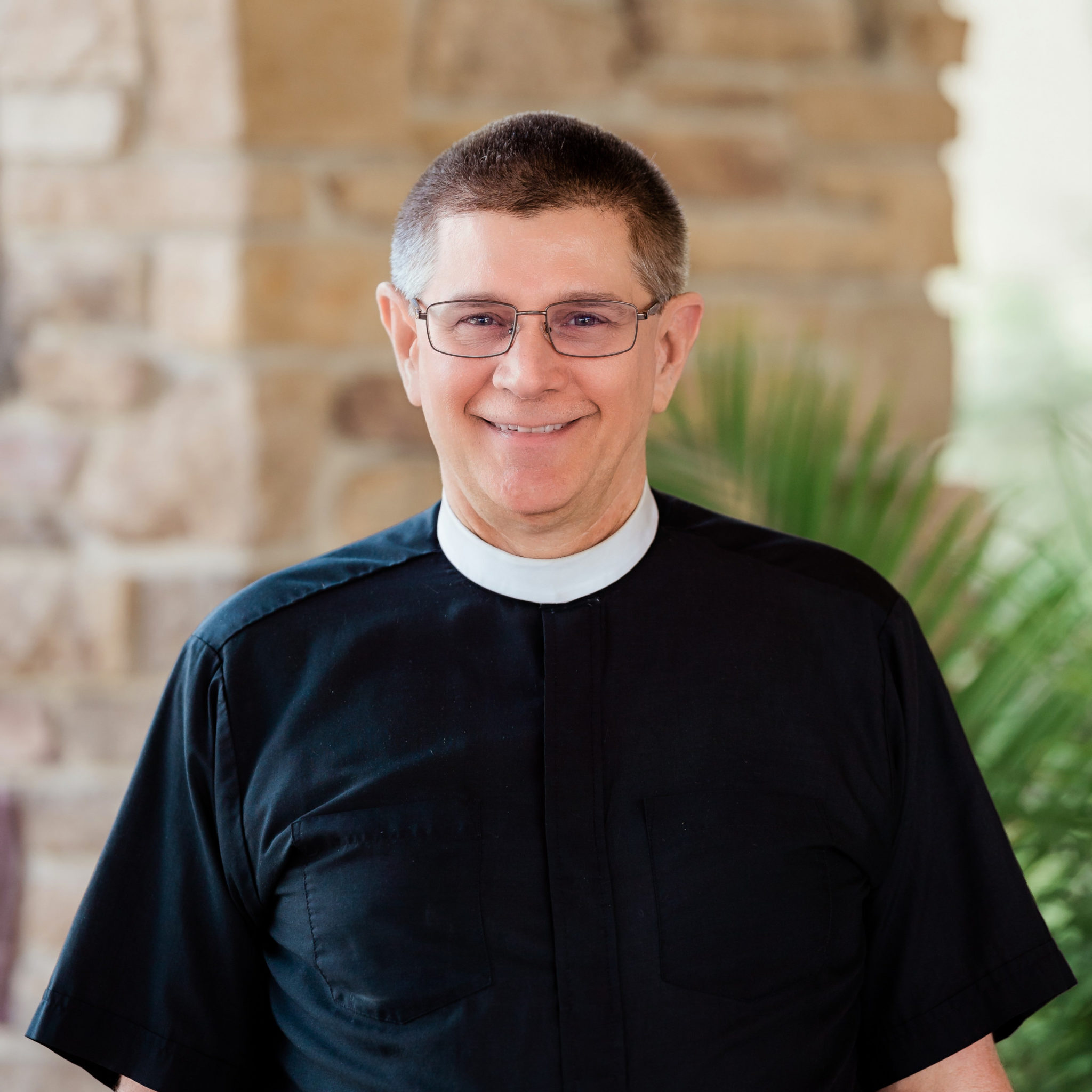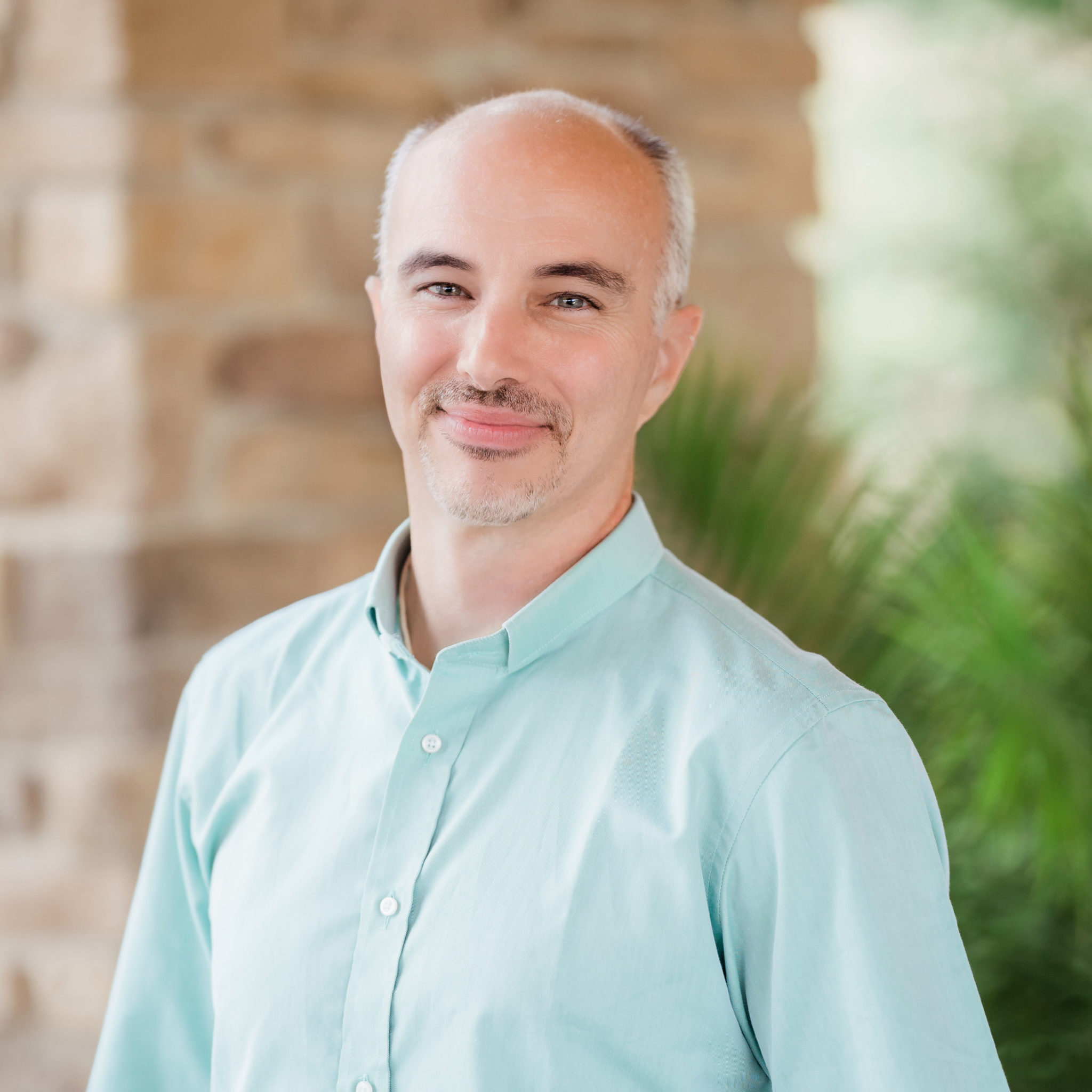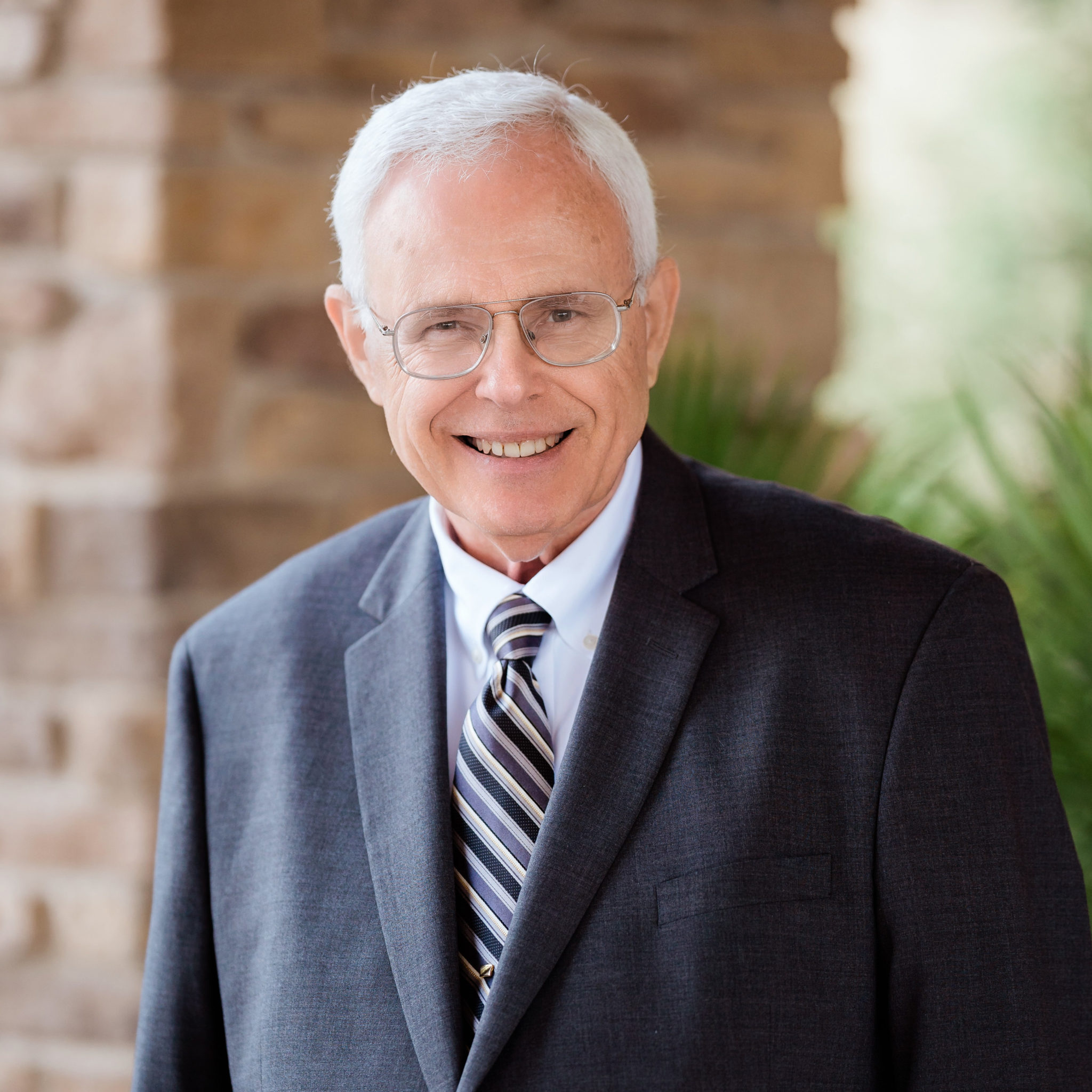2025
Northeastern Pennsylvania Synod
Strategic Intent
“Do not be conformed to this age, but be transformed by the renewing of the mind, so that you may discern what is the will of God—what is good and acceptable and perfect.”
Romans 12:2
Additional printable PDFs of this information can be found at the bottom of the page

Our gracious God is in our midst, transforming all of us, as St. Paul writes in his epistle to the Romans. In fact, Chapter 12 of that amazing letter has been our guide, not just for this upcoming Synod Assembly, but also for the past year of being church together. As the Holy Spirit does this work of transformation on us – our church, our communities, our very selves – we recognize more than ever our need to live and work together; in fact, to become more connected than ever before. Not just to survive, but to thrive – and to share the living gospel of the crucified and risen Christ, so that we, along with all our neighbors and all creation “…may have life, and have it abundantly.” (John 10:10)
To this end, in this past year we have been guided by this statement of purpose – Connecting congregations for life-giving mission and ministry: so they can love like Jesus, heal like Jesus, and engage like Jesus – growing young, gaining strength, and going beyond death to life.
Going forward, we will be transitioning our staff to focus and enhance our support to congregations, their members and leaders. These transitions will begin this May and continue into the new fiscal year beginning February 1, 2026. The full details of these changes can be found in the document “2025 Strategic Intent” available by clicking here.
10 Strategic Goals
Led by the gospel of the crucified and risen Lord Jesus Christ and his command to love one another; together as congregations and leaders; as bishop’s staff; and as synod leadership; with support from our ELCA churchwide organization, ecumenical and global companions, and ministry partners: we are working towards these broad goals for the next five to seven years. From these, we will develop sub-goals and metrics for tracking and communicating our progress.
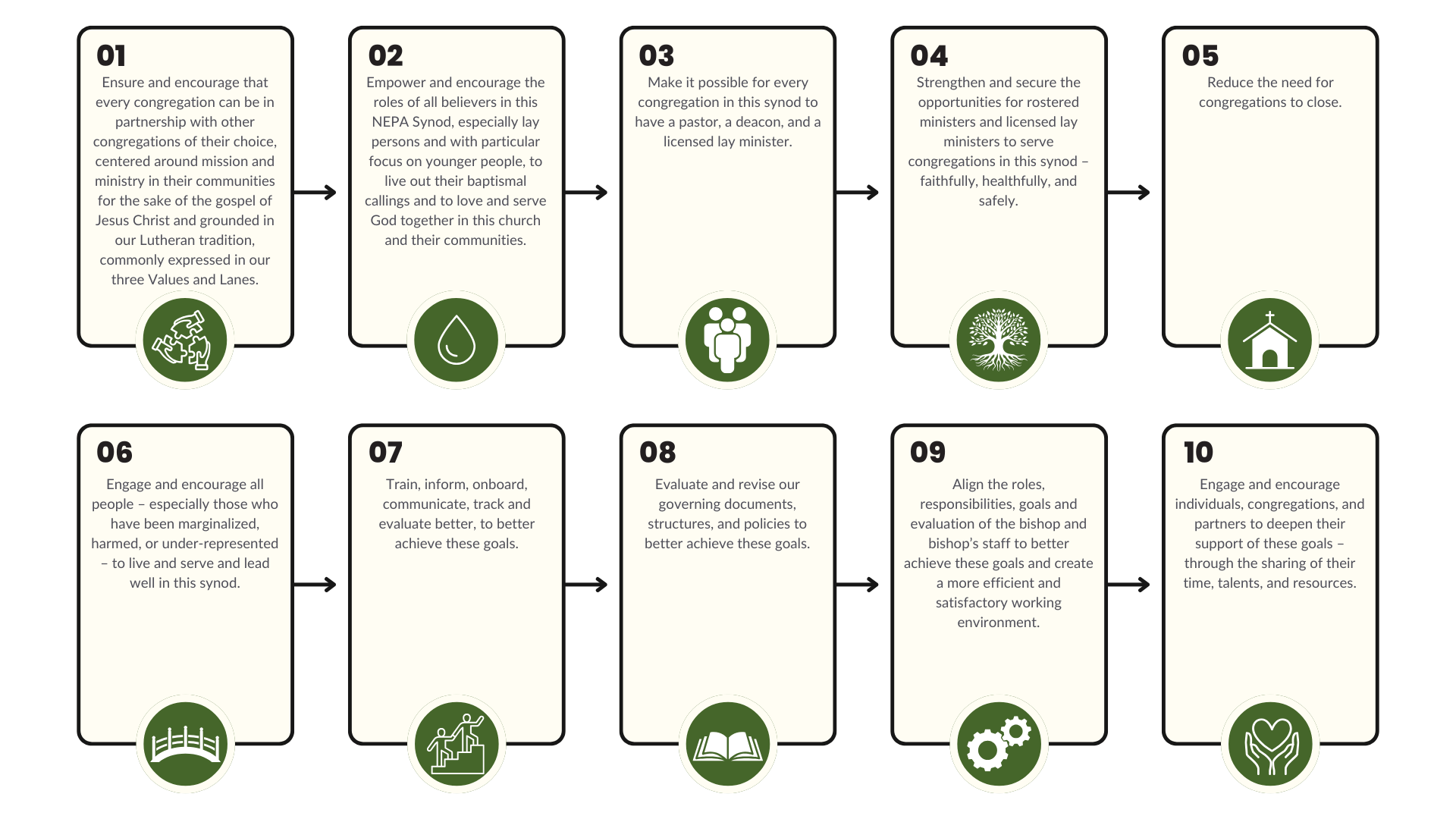
Bishop’s Staff – New Roles and Alignments
The bishop’s staff and synod leadership exist to serve God’s mission primarily through congregations. The metaphor we use is C.A.R. – which means that the bishop’s staff and synod leadership serve and assist congregations and their members and communities to connect, to administrate, and to resource. We are like a pace car or service vehicle, running alongside congregations as they travel the lanes of this road: on the way of Jesus.
Just as congregations are called to work closer together, we need a bishop’s staff structure that works in concert: with clear responsibilities, but also with blurred lines between roles for mutual collaboration and support. Responsibilities for key staff leaders will align in two ways: by missional lane and by service area. Key staff leaders will also bear the description “Lead Servant For…” to show our commitment and intentional to serve and support our congregations, their ministries, and their lay and rostered leaders who in turn understand themselves as servant leaders – disciples in the name and the way of Jesus Christ.

Alignment by Lanes
Staff structure will be guided by our vision for missional development across the synod territory in terms of the three lanes: Growing Young, Gaining Strength, and Going Beyond Death to Life. Each lane will have at least one Lead Servant assigned to focus on that lane, while communicating and collaborating with their colleagues, and with all leaders and congregations.
Alignment by Service Areas
Along with the three lanes – the roles and responsibilities of each Lead Servant will also be shaped by the following categories or constituents needing service and support:
This service area includes support for rostered ministers (pastors and deacons), active and retired; licensed lay ministers (LLMs); candidates discerning calls to lay or rostered ministry; and leaders serving roles as officers and council members in congregations. We will be conducting a search for this role starting May 16.
This service area includes support for our current congregations, especially those in transition (in search of a new rostered leader). We will also conduct a search for this Lead Servant; however, the roles will be transitioned with care over time, as we work with our current seven Associates of the Bishop and our Committee of nine Mission District Deans to maintain strong and ongoing support. We will begin a search for this role starting May 16.
This service area includes support for ministries to youth, young adults and families; and the new and existing special ministry communities designated as “Synod Authorized Worshipping Communities’ (SAWCs) and “Synod Authorized Outreach Communities” (SAOMs). The Lead Servant will help us take our “Growing Young” initiatives into new ministries and new directions. We will also be conducting a search for this role starting May 16.
This service area includes support for our rostered minister development groups known as “Gaining Strength Cohorts”; and our 6261 Ministry Communities. This Lead Servant role will be filled by our current Director for Evangelical Mission, Deacon Kat Tigerman.
Each of these Lead Servants will be the “go-to” person on staff for each service area. They will work alongside:
With support from administrative staff, this role will be responsible for human resources, onboarding new staff, evaluation processes, calendar, facility needs, staff meetings, and inner-staff communication. This will include the creation of an electronic planning platform and “dashboard” system for keeping track of key goals and metrics. Eric Gombert will continue in this role.
Reporting to the Director of Operations, this role will continue to coordinate all our internal and external communications. Stacey Burke is continuing in this role.
Reporting to the Director of Operations, our two Administrative Coordinator positions will continue: Laurie Christman as Leadership Support Coordinator; and Debbie Skinner as Mission Support Coordinator. Pastor Jira Albers will continue as our part-time LLM Coordinator. We will be adding a third, part-time administrative support for 6261 and LLM. And we will continue to work with as-needed support from Pastor Doug Hill for our Gaining Strength Cohorts; and Pastor Dave DeRemer as a 6261 Coach.
Following the full implementation of this new staff structure, the support work currently carried out through the roles of the seven Associates and one Executive Associate for Leadership would move to:
- Two full-time Lead Servants – one supporting the leaders, and one supporting congregations.
- The current nine pastors serving as the elected Committee of Deans – with some additional training but without need to expand their current workload.
- The current “Gaining Strength Cohort” groupings, which builds-in support and pastoral care for pastors and deacons – now and more so as time goes on.
- The current rostered minister mentors providing support and care for LLMs
- And, to be developed: leaders trained and deployed as “transition coaches” who can work with congregations in transition (similar to the UCC process).
- Working as well with the bishop and admin support staff.
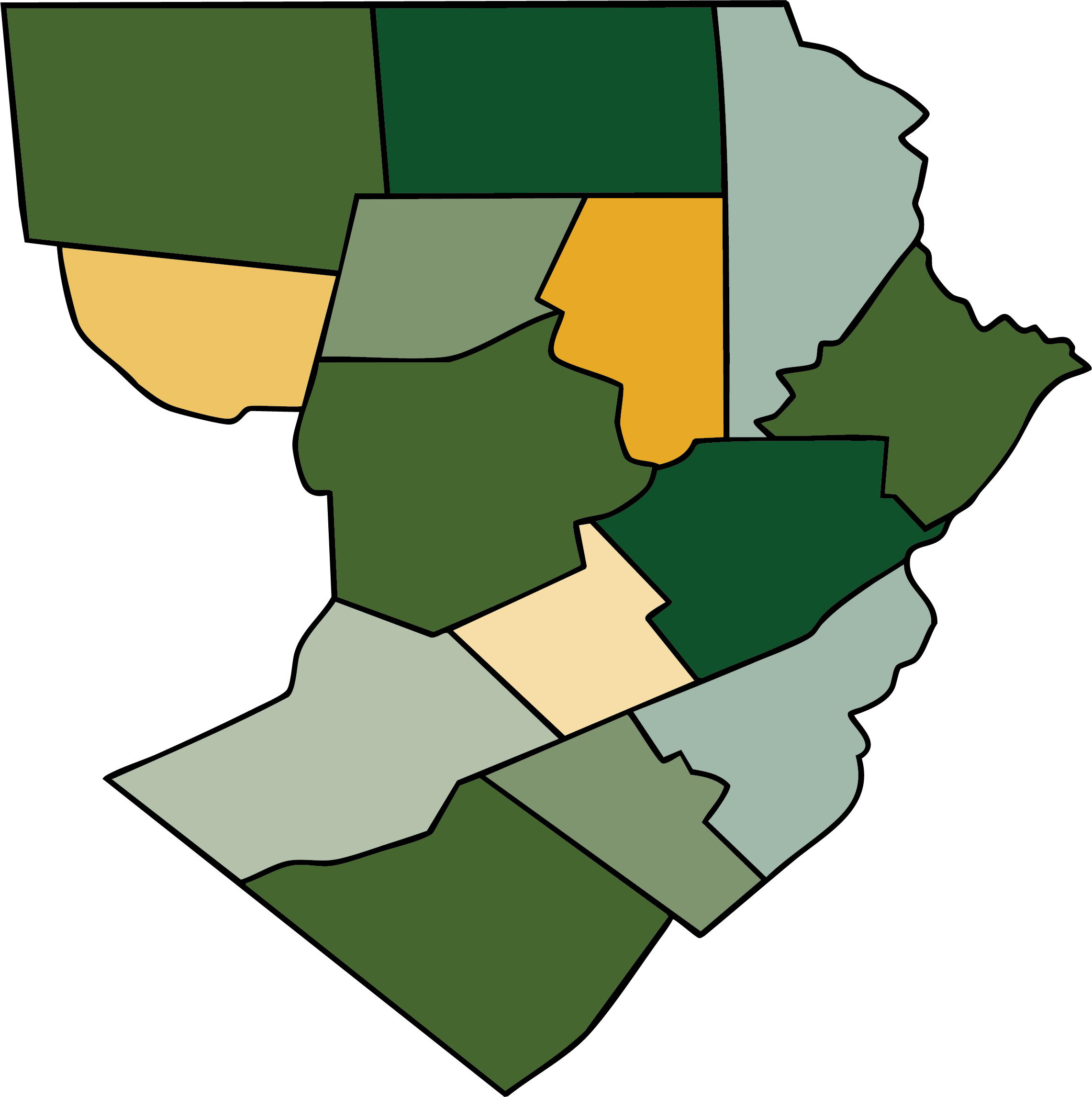
Associates of the Bishop
For over 20 years, we have greatly benefited from a staff structure that included multiple Associates of the Bishop who serve in Mission Districts, especially in accompanying congregations in transition. Early on, these were full-time positions with one per Mission District. In the past four years, we have reduced that number to seven – doing this work part time, along with their full-time work as pastors in congregations.
However, several challenges have made this structure less effective, including:
Less consistency of process and messaging across mission districts – seven different methods have developed, sometimes leading to confusion for staff, rostered minister candidates, and congregations in transition.
Some mission districts have a lot of work for Associates to do, others less so.
The full-time pastors in this role cannot be in other congregations on Sundays; yet Sunday mornings are the prime time to best interact with the whole congregation.
They are also very busy with their own congregations; and some are bearing additional responsibilities beyond their congregations.
It is increasingly difficult for them to find the time to meet regularly as a group.
Most of these challenges could be more efficiently addressed if this work were shared differently – moving towards a staff with fewer people who have more time to commit to these tasks.
It needs to be made very clear that the seven rostered ministers currently in this role, and the others who preceded them, have done and are doing an outstanding job. They have worked with hundreds of congregations and rostered ministers to find fulfilling and well-placed calls, while maintaining full-time leadership roles in their own congregations. They have put in countless hours, driven thousands of miles, made many phone calls and visits, poured over documents, faithfully created and followed processes and prayerfully devised creative new solutions that have led to Spirit-led outcomes across this synod and the whole church. They have served and led through colossal changes and a global pandemic, with many leaders and congregations deeply grateful for their work.
This transitional period will take time – monthly most likely. There will need to be sufficient overlap between the current and future structure to minimize the disruption for congregations, staff, and all involved, including the Associates themselves. Bishop deForest also looks forward to working with each current Associate to discern ways to pursue ministries, ideas, and initiatives that they feel called to and passionate about – including 6261, LLM mentorship, and other missional plans and areas of expertise. This is also an opportunity to lift up appropriate authority of and partnership with our nine Mission District Deans. These Rostered Ministers have been elected by their Mission Districts and already serve as valued leaders in terms of pastoral care and mission district governance.
Over the coming months, we will take opportunities to give thanks to God for the dedicated work of these Associates of the Bishop:
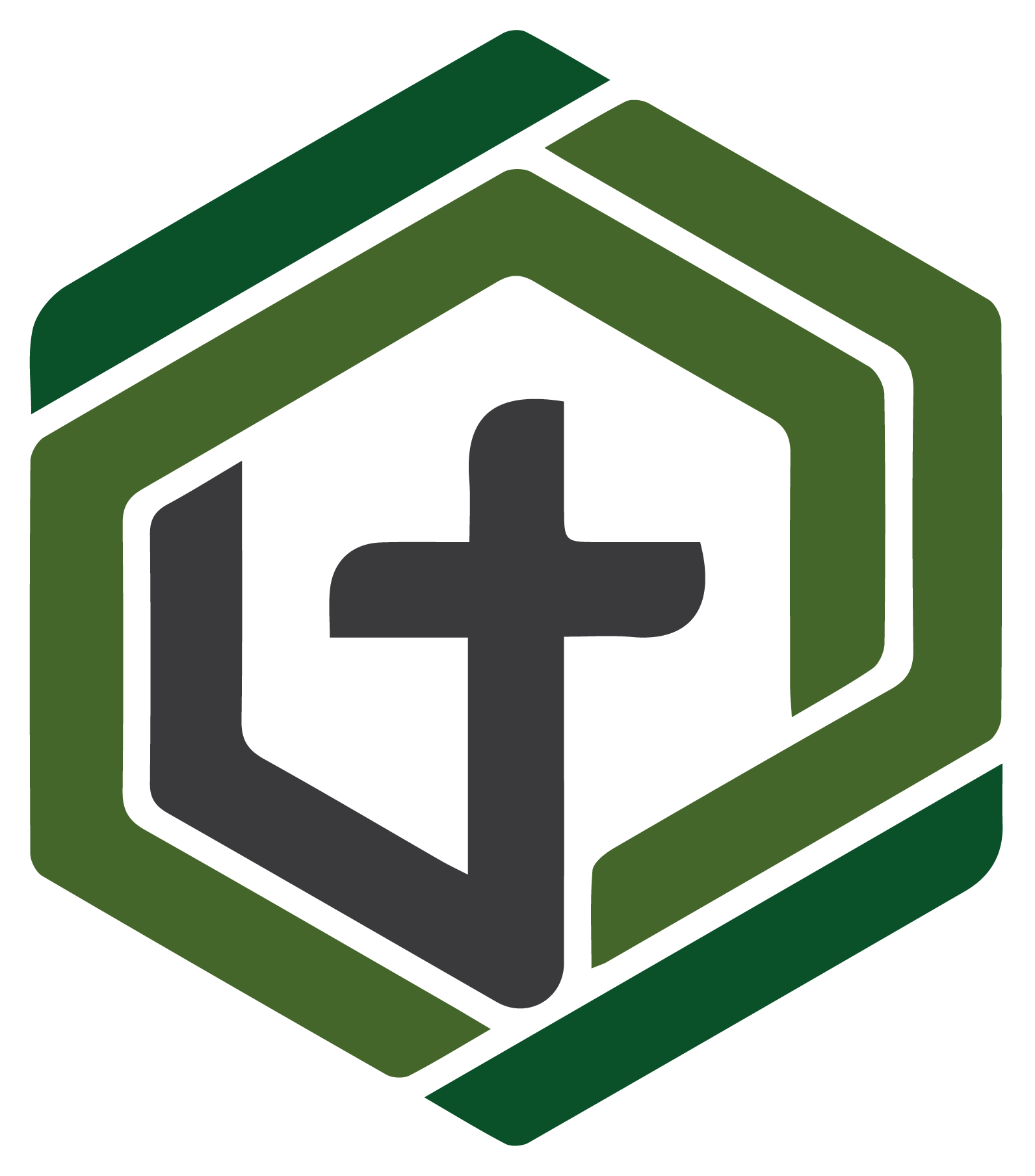
2025 Strategic Intent – Transition Time Line

Some Frequently Asked Questions:
In depth details are available in the “Strategic Intent” document. If you have additional questions, please call or email Bishop Chris deForest at (610) 266-5101, or contact out Director of Communication, Stacey Burke, at (610) 266-5101.
And stay connected to our monthly SYNOD NEWS or our synod website
Click the links below to download printable PDF versions of the above information

